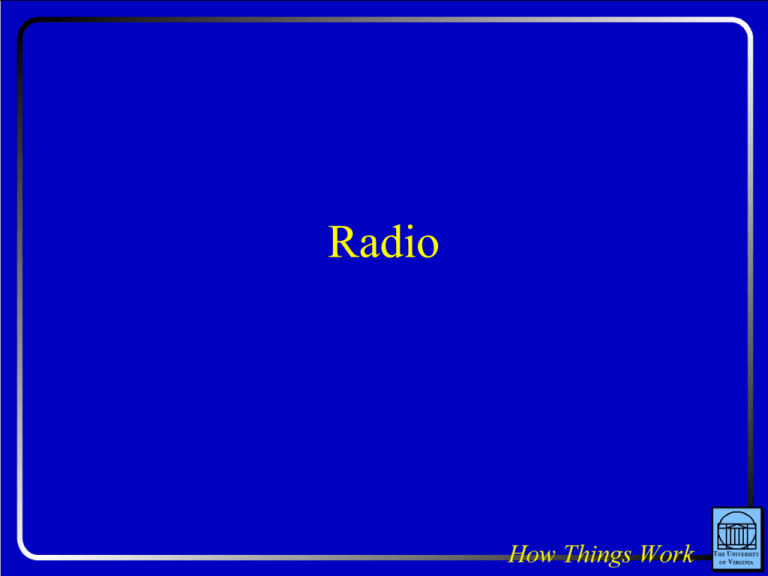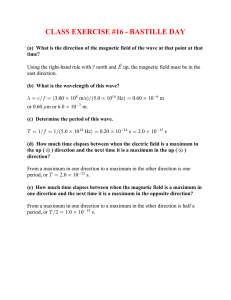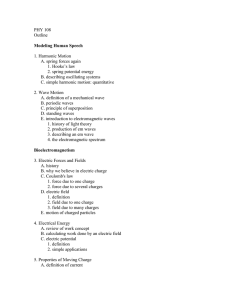Radio
advertisement

Radio Question: If you took an electrically charged ball and shook it up and down rapidly, charges in a nearby metal object would move in response. How far away could that metal object be and still respond? 1. 1 meter 2. 1 kilometer 3. The other side of the universe Observations About Radio • • • • • • Transmit sound long distances without wires Involve antennas Seem to involve electricity and magnetism Reception depends on antenna positioning Reception weakens with distance Two styles of radio: AM and FM Electromagnets and Energy • Electric and magnetic fields contain energy • An electromagnet stores magnetic energy • Electromagnet consumes energy as it turns on – Current temporarily experiences a voltage drop • Electromagnet releases energy as it turns off – Current temporarily experiences a voltage rise • Electromagnet opposes current charges Inductors • Inductors are electromagnets • Inductors store magnetic energy • Inductors oppose changes in current Tank Circuit • Inductor & Capacitor share energy • Charge flows back and forth through inductor • Energy shifts back and forth between the two devices Tank Circuit Oscillation Tank Circuits in Radio • • • • Tanks are resonant devices Tanks build up energy at a specific frequency Tanks help radios emit radio waves Tanks help radios detect radio waves Emitting Radio Waves 1 • A transmitter uses a tank circuit to “slosh” charge up and down its antenna • A receiver uses a tank circuit to detect charge “sloshing” on its antenna • Transmitter antenna charge affects receiver antenna charge Emitting Radio Waves 2 • Accelerating charge emits radio waves – Charge produces electric field – Current produces magnetic field – Changing current produces changing magnetic field, produces changing electric field, prod… • A radio wave consists only of an electric and magnetic field • A radio wave travels through empty space at the speed of light Structure of a Radio Wave • Electric field is perpendicular to magnetic field • Electric field creates magnetic field and vice versa • Electric field determines polarization of the wave AM Modulation • Information is encoded in the fluctuating amplitude of the wave • Pressure variations cause changes in the amount of charge moving on the antenna FM Modulation • Information is encoded in the exact frequency of the charge motion • Pressure variations cause slight shifts in the frequency of charge motion on the antenna Question: If you took an electrically charged ball and shook it up and down rapidly, charges in a nearby metal object would move in response. How far away could that metal object be and still respond? 1. 1 meter 2. 1 kilometer 3. The other side of the universe





